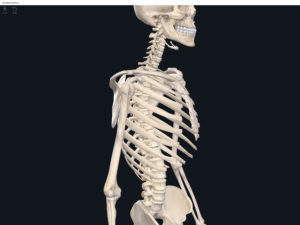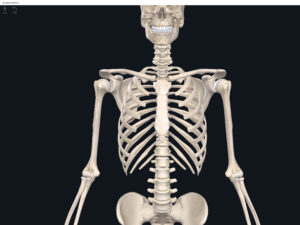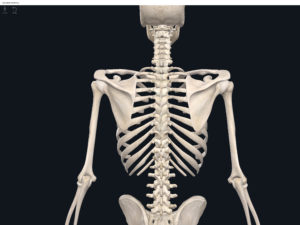Anatomy & Physiology: Bones—Ribs.
Structure.
- There are 12 pairs of ribs.
- Rib length increases from rib 1 to rib 7; rib length decreases from rib 8 to rib 12.
- Ribs articulate posteriorly with the thoracic vertebrae.
- Ribs 1-7: called “true ribs” because they directly articulate anteriorly with the sternum via costal cartilage (hyaline).
- Ribs 8-12: called “false ribs” because they do not directly articulate with the sternum via costal cartilage. Instead, they are indirectly attached to the sternum via costal cartilage or are not at all attached to the sternum.
- Ribs 11-12: called “floating ribs” because they do not attach to the sternum at all via their costal cartilage.
- Head of rib: the end that attaches posteriorly to its corresponding thoracic vertebra via facet of the vertebral body or demifacets of two neighboring vertebrae.
- Superior and inferior facets.
- Neck: slightly narrower and lateral to the head.
- Tubercle: knob-like. Where the head joins the rib’s body.
- Facet of tubercle: articulates with the facet of a transverse processes of the thoracic vertebrate.
- Body: the main shaft.
- Costal angle: at the curve from posterior to anterior.
- Costal groove: attachment site and protects vessels and nerves.
Function.
Clinical Significance.
- Intercostal space: space between ribs; occupied by muscles, nerves, and vessesls. This space usually needs to be breached in order to access the internal organs.
References
Biel, A. (2015). Trail guide to the body: A hands-on guide to locating muscles, bones and more.
Cedars-Sinai. (2018). Vertebrae of the spine. Retrieved from https://www.cedars-sinai.org/health-library/diseases-and-conditions/v/vertebrae-of-the-spine.html
Jenkins, G., & Tortora, G. J. (2012). Anatomy and Physiology: From Science to Life, 3rd Edition International Stu. John Wiley & Sons.
Muscolino, J. E. (2017). The muscular system manual: The skeletal muscles of the human body.



